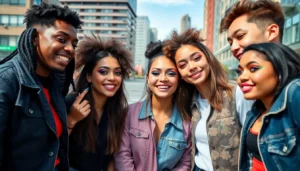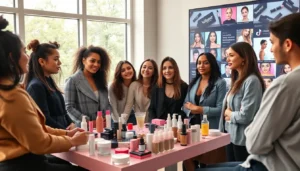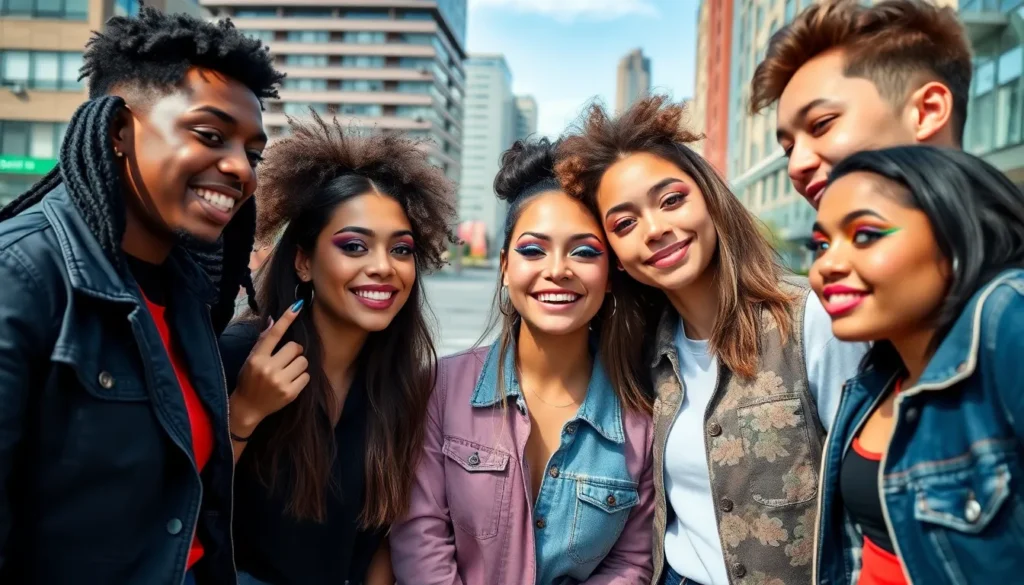Table of Contents
ToggleEver found yourself laughing uncontrollably at a video of a cat playing the piano or marveling at a dance challenge that took over your social feed? Welcome to the world of viral culture, a phenomenon that can turn a simple meme into an internet sensation overnight. With an ever-changing digital landscape, understanding what triggers virality is essential, not just for influencers but for anyone hoping to stay relevant in today’s content-driven world. Let’s investigate into how viral culture operates, the forces at play, and what makes people share, click, and laugh uncontrollably. Spoiler alert: it might not be what you think.
Understanding Viral Culture

To grasp the essence of viral culture, one must first understand the concept of virality itself. Viral culture refers to the tendencies of certain types of content to rapidly spread across social media platforms, reaching audiences far and wide, often within a matter of hours or days. This isn’t merely about catchy cat videos or wacky dance trends: rather, it’s a complex interplay between content creation, audience engagement, and the mechanics of social media. Imagine a snowball rolling down a hill. Initially small, it gains more snow (or viewers) as it rolls, eventually becoming a colossal force driving trends and discussions globally. As technology thrives and social media evolves, traditional media forms take a backseat. Now, anyone with a smartphone can create content that might just capture the internet’s imagination.
In this climate, understanding how viral culture works can offer insights into what kind of content resonates with people. It’s not merely about being funny or shocking: it often combines elements of relatability, timeliness, and shareability. Each piece of viral content contributes to a larger conversation, tapping into current events or collective experiences, allowing audiences to connect over shared emotions.
The Impact of Social Media on Viral Culture
Social media platforms have revolutionized the way content spreads. No longer constricted by geographical limitations or broadcasting schedules, platforms like TikTok, Twitter, and Instagram have placed the power of virality in the hands of everyday users. With the right mix of creativity and timing, any post can cascade through the digital landscape, garnering views from millions around the globe. Videos can go from zero to viral in mere minutes. One factor is the algorithm, essentially the magic behind how content gets visibility. Algorithms prioritize engaging content that keeps users on the platform longer. When someone interacts with a post (by liking, sharing, or commenting), it signals to the algorithm that the content is worth highlighting. This visibility snowballs, creating an enviable cycle for the original creator.
Also, social media facilitates immediate feedback, enabling users to gauge what resonates with their audience almost instantaneously. This dynamic interaction transforms passive consumption into active engagement, allowing creators to tweak their approach based on audience reactions. Hashtags, trends, and challenges further fuel this engine, amplifying reach and encouraging replication. They help viewers latch onto shared experiences, making them feel part of a larger movement, so enhancing user participation.
Key Elements of Viral Content
Not all content is destined for virality. Certain core elements tend to elevate posts to viral status. First and foremost, emotional resonance is crucial. Whether it evokes laughter or empathy, content that strikes an emotional chord prompts viewers to share with others. Relatability is another key ingredient. Content reflecting daily struggles, humorous takes on common situations, or heartfelt messages often find themselves being shared extensively. Next up: uniqueness. In a sea of sameness, originality stands out. Creating something unique or introducing a new spin on existing concepts can capture audience attention.
Visual appeal also plays a role: high-quality images and videos can engage viewers faster and keep them interested longer, making it essential for content creators to focus on aesthetics. Finally, shorter content tends to perform better. In our fast-paced world, where attention spans are dwindling, bite-sized content enables quicker consumption. Longer videos may offer in-depth value, but the initial attention-grabbing moments are vital to ensuring viewers stick around.
Examples of Viral Culture Phenomena
In exploring viral culture, one can’t ignore iconic examples of phenomena that took the internet by storm. Consider the Ice Bucket Challenge, which not only went viral but also raised millions for ALS research. Social media campaigns often leverage collective participation, blending fun with purpose. Another example is the dance challenges on TikTok, where users replicate choreographies to trending songs, creating a global sensation that often features celebrities joining in the fun.
Memes also illustrate viral culture beautifully, transcending language barriers and cultural differences. From the success of Pepe the Frog to the rise of ‘Distracted Boyfriend,’ memes encapsulate feelings and situations, making them universally relatable.
Also, viral videos like ‘Charlie Bit My Finger’ or ‘Gangnam Style’ showcase how simple yet unexpected content can dominate across platforms, sparking widespread shares and discussions. These instances reinforce that viral culture isn’t confined to traditional forms: it evolves and adapts, reflecting the ever-changing digital landscape and collective audience experiences.
The Role of Influencers in Viral Trends
Influencers stand at the epicenter of viral culture, operating as catalysts for trends and movements. Their substantial followings exemplify the power dynamics at play: a single post from an influencer can propel content into the spotlight almost overnight. They wield considerable influence, often shaping audience perceptions and behaviors about products, ideas, and movements.
Platforms like Instagram and YouTube are saturated with influencers specializing in various niches, from fashion and beauty to gaming and cooking. These creators develop a sense of community, where their audiences feel more connected, leading them to share content even further. Influencers also tap into their creativity and originality, often making trends their own and contextualizing them for their audience. This personalization adds a layer of trust: followers are more likely to engage with the content when they feel a connection. Influence, but, doesn’t come without responsibility. The very nature of influence means that creators must be conscious of the trends they promote and the impact they can have on their audience.
The Psychological Triggers Behind Virality
Diving deeper into the psyche, several psychological triggers often underlie why certain content goes viral. Fundamental emotions like joy, surprise, and even anger can drive engagement. For instance, a heartwarming story or a shocking revelation can evoke strong reactions, prompting users to share those emotions. Also, the desire for social validation plays a crucial role. People often share content that aligns with their identities or values, seeking reinforcement from their peers.
FOMO (Fear of Missing Out) also amplifies sharing behaviors. Individuals want to be part of the conversation, driving them to share trending content before it disappears from their feeds. Cognitive bias also steps in: people often gravitate towards content that reinforces their existing beliefs or opinions. By recognizing these triggers, content creators can better craft their messages and form strategies that resonate deeply with their audiences.
Navigating the Negative Aspects of Viral Culture
Even though its many joys, viral culture has its darker side. It can create unrealistic expectations and pressure, especially for content creators trying to replicate success. The constant chase for virality can lead to burnout, pushing individuals to compromise on authenticity or quality. Also, the fleeting nature of viral fame often leaves many creators feeling unfulfilled once the moment passes.
Also, negative behaviors like cyberbullying can emerge from a viral spotlight. When content becomes controversial, it often attracts criticism, leading to backlash and harm to those involved. Hence, while chasing virality can yield immense rewards, it’s crucial to approach it with a balanced perspective, prioritizing mental health and authenticity in content creation.










